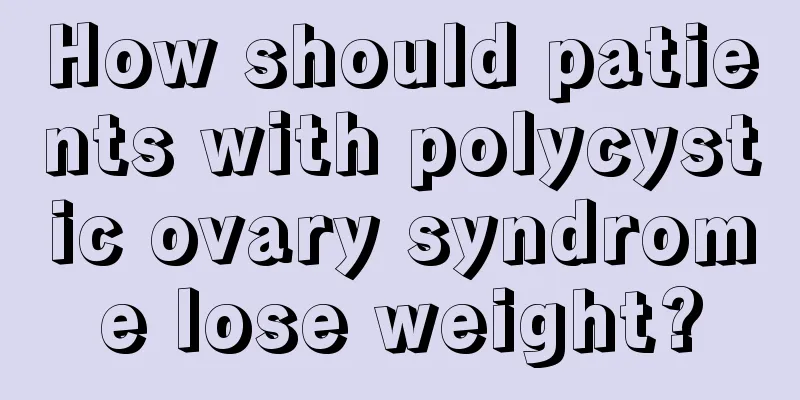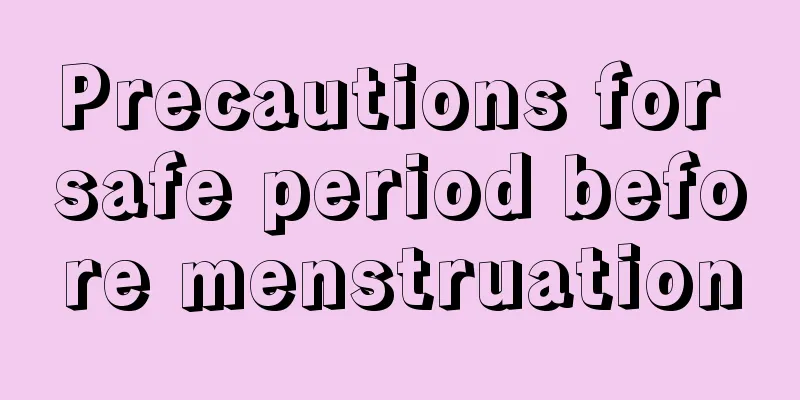What can I eat to relieve menstrual cramps?

|
Women all look forward to a relaxing time every month, but they still have to endure the ravages of menstruation every month. The pain during menstruation is indescribable. Men cannot feel it at all, and women can only bear it silently. Due to different body structures, the problems encountered are also different. No matter how diligent women are, menstrual cramps will come on time, and relieving dysmenorrhea has become a top priority. What causes menstrual pain? 1. The narrow cervical canal is mainly caused by the obstruction of menstrual flow, resulting in menstrual pain. 2. Uterine hypoplasia. Poor uterine development is very likely to cause abnormal blood supply, leading to uterine ischemia and lack of oxygen, causing menstrual pain. 3. Abnormal position of the uterus. If the position of a woman's uterus is extremely retroflexed or flexed, it may affect the smoothness of menstruation and cause menstrual pain. 4. Genetic factors: Dysmenorrhea in daughters is related to their mothers' dysmenorrhea. 5. Endocrine factors: Abdominal pain during menstrual period is related to the increase of progesterone level in the follicular phase. 6. The content of prostacyclin (PG) in the uterine wall and menstrual blood increases. Prostaglandin E2 (PGE2) acts on the uterine muscle tissue to contract and cause menstrual pain. The content of prostacyclin in the uterine wall tissue of menstrual patients is significantly higher than that of normal women. What to eat during menstruation to relieve dysmenorrhea 1. Foods high in copper During menstruation, many women are prone to anemia. Due to the high loss of iron, it is very important to supplement with foods rich in copper. Fish, lean meat, animal liver, animal blood, etc. are rich in copper and have strong biological activity, and are easily digested and used by the body; while the plant iron contained in soybeans and broccoli has a lower digestibility. Therefore, you should pay attention to nutritional balance in your diet during menstruation, and eat more animal products in moderation to meet the special needs of iron during menstruation. 2. Foods containing vitamin E Women who lack vitamin E may experience weakness in the limbs, sweating, tension, anxiety, menstrual pain, etc. Women who have dysmenorrhea during menstruation should eat more green leafy vegetables and cooking oils. Foods containing vitamin E include egg yolk, bean products, broccoli, rapeseed, kale, cooking oil, sesame oil, dried fruits, etc. |
<<: Tips for relieving menstrual pain
>>: What medicine to take for long-term dysmenorrhea
Recommend
What is the mentality of frequently sending ambiguous messages to the opposite sex and how to start an ambiguous conversation with the opposite sex who you haven't chatted with for a long time
For single people, ambiguity starts with physiolo...
Can women take Chaozhian during menstruation?
Women's menstrual period is a very important ...
Effects of irregular menstruation on the fetus
Irregular menstruation is a problem that many fem...
How to use dandelion to treat breast hyperplasia
The dandelions growing on the roadside are beauti...
What kind of milk is good for pregnant women with anemia
Some pregnant women may suffer from iron deficien...
How long does the released egg survive in the body?
Poor egg quality and short egg survival time will...
Why should we drink enzymes? How to choose enzymes?
Good enzymes should have the fragrance of plants,...
What to do if you have postpartum constipation? This diet can relieve
Many mothers are prone to constipation shortly af...
Does a diagnosis of breast cancer mean a terminal illness? What are the misunderstandings about breast cancer?
According to data from the World Health Organizat...
What is beetroot? What are the benefits of eating beetroot?
Beet is a special kind of vegetable. Compared wit...
What to do if uterine erosion is 1st degree
For those friends who have been diagnosed with fi...
Can I still get pregnant after a fallopian tube removal?
There are many women who need to have their fallo...
What causes ovarian cysts?
Among many gynecological diseases, ovarian cysts ...
Why does a girl's butt itch?
Some girls may have experienced this situation, t...
A woman dreamed of seeing a wall collapse
Nowadays, some rental houses use walls as partiti...




![[Weight loss tips] Sit-ups are the fastest way to lose weight in the abdomen](/upload/images/67ce23ae1c75b.webp)




